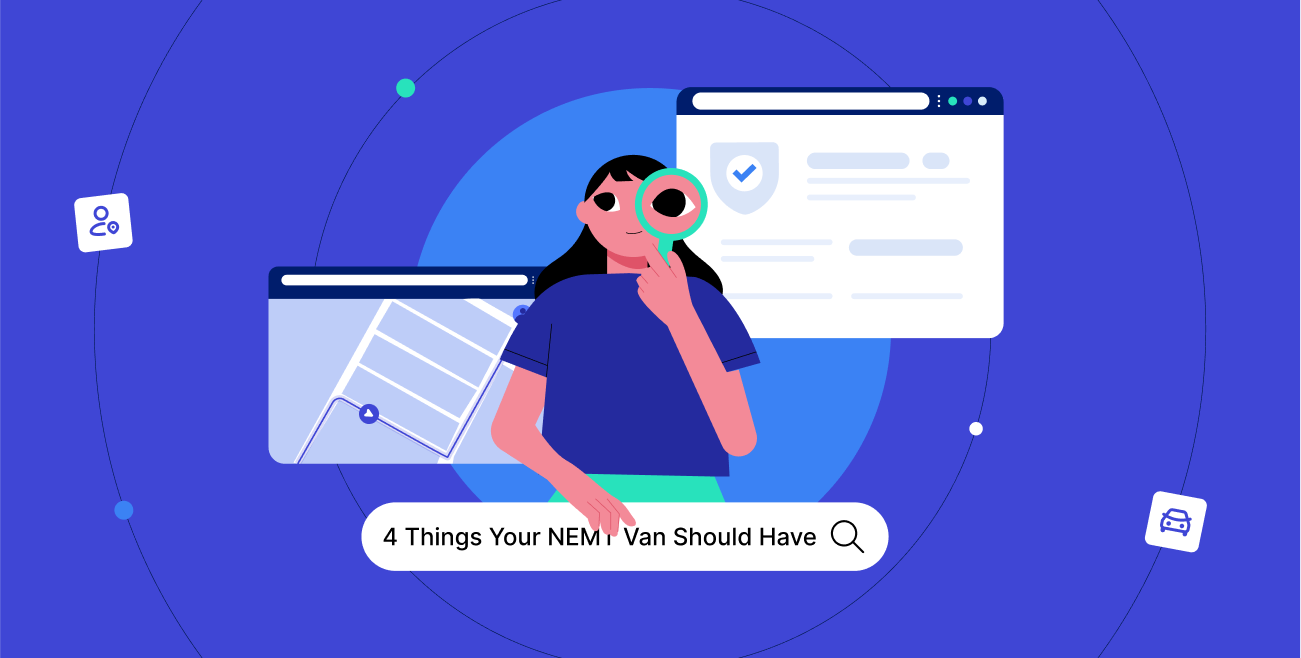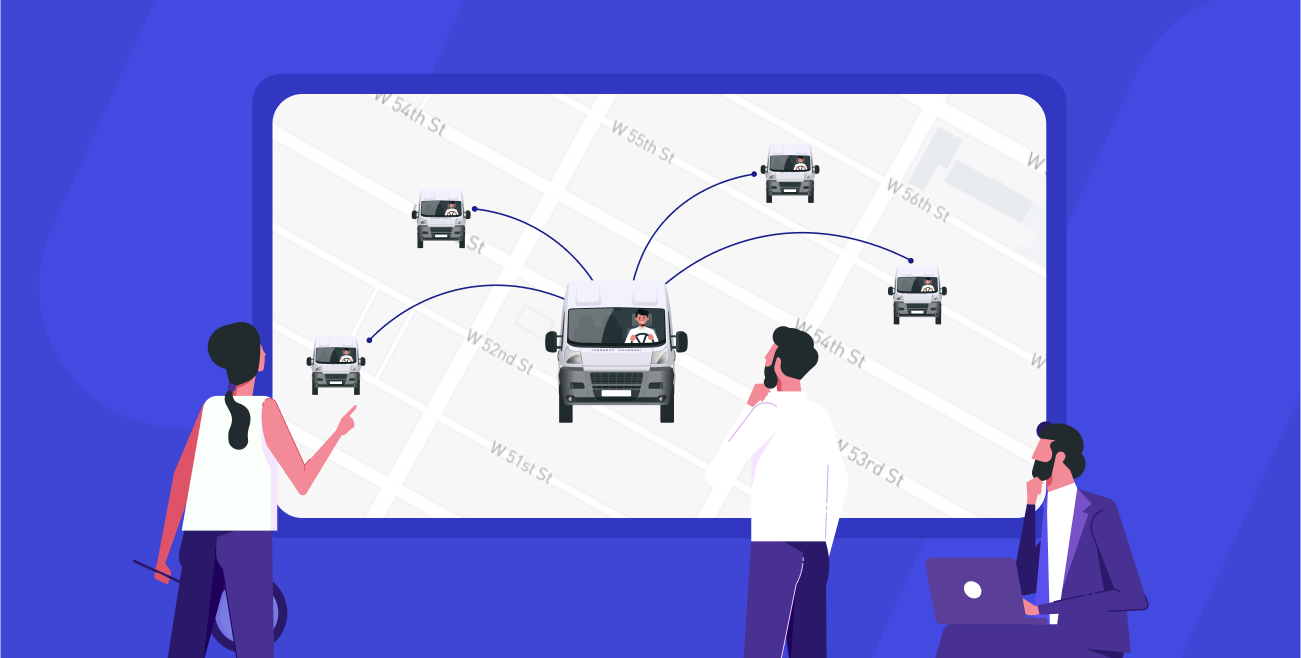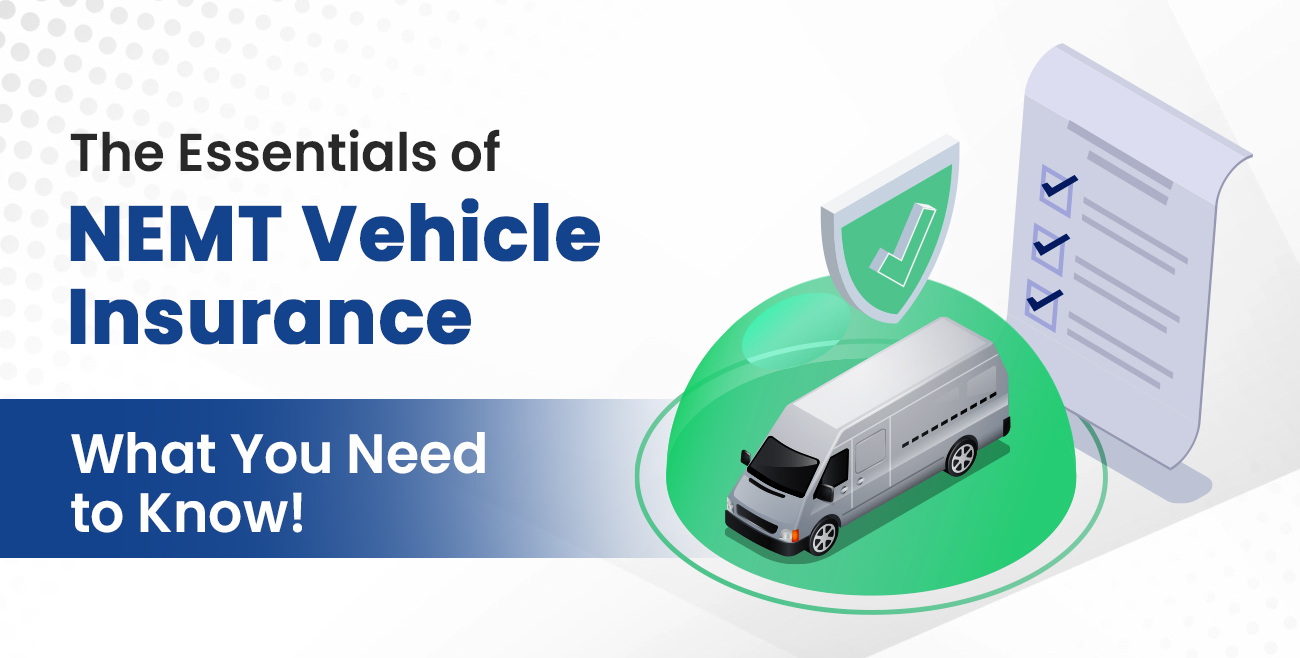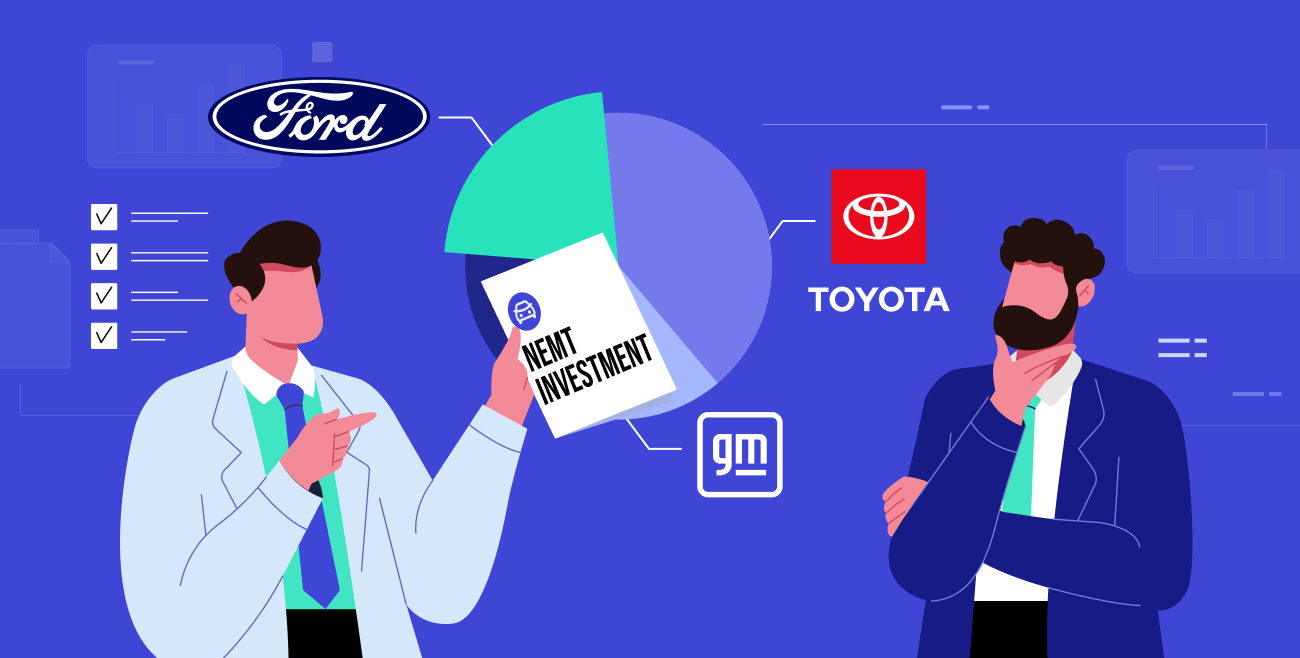
Table of Contents
What makes a great service stand out from a good one?
It’s the attention to detail—the little things that make a big difference in how patients feel, stay safe, and remain satisfied. Meeting the basic standards is necessary but not enough. It’s the extra mile that separates the leaders from the followers.
This article explores four key features that your NEMT van needs to have but are often ignored or neglected.
1. Advanced Safety Features
We believe advanced safety features are not just nice to have; they are a must-have.
They are especially important for NEMT vans, as they cater to passengers with medical or mobility issues that make them more susceptible to injuries or complications during transit.
For example, imagine a patient who needs dialysis and has to travel to a clinic three times a week. They depend on NEMT services to get them there safely and comfortably. However, on the way, the van encounters a traffic jam, a reckless driver, or a slippery road. Without advanced safety features, the van could be involved in a collision, a rollover, or a skid, putting the patient’s life at risk. Even a minor incident could cause the patient to miss their appointment, suffer a setback in their treatment, or experience stress and anxiety.
This is where advanced safety features come in handy. They provide an extra layer of protection and assurance for both the passengers and the drivers.
- Collision Avoidance Systems: These systems use sensors and cameras to monitor the surroundings of the van and alert the driver of any potential hazards or obstacles. This way, they can prevent or minimize the damage caused by collisions, which are one of the leading causes of fatalities and injuries on the road.
- Electronic Stability Control (ESC): ESC is a feature that helps the driver maintain control of the van in case of sudden or extreme maneuvers, such as swerving, braking, or accelerating. It does so by applying brakes to individual wheels or adjusting the engine power to keep the van stable and on course. This reduces the likelihood of rollovers or skids, which are more common for vans than for smaller vehicles due to their higher center of gravity and larger size.
However, having these features is not enough; they also need to be maintained and checked regularly to ensure that they work properly and consistently. Follow a strict maintenance schedule and inspect and repair any issues with the safety systems as soon as possible.
It’s also a good idea to train your drivers on how to use and benefit from these features and how to handle any malfunctions or emergencies. This will maximize the effectiveness and reliability of these features and provide the best possible service to their passengers.
Do More with Less
Handle more trips with fewer dispatchers on your payroll with Tobi.
Request a Demo2. Non-Carpet Flooring
NEMT vans are designed with the passengers’ safety and comfort in mind.
Every detail of the vehicle’s design can affect the quality of the service, including the choice of flooring. While many vehicles have carpeted floors, which might seem cozy and appealing, they are not the best option for NEMT services.
Carpets have several drawbacks that can compromise the health and hygiene of the passengers and the vehicle.
For example, carpets can trap dirt, dust, allergens, and germs, which can harm passengers who have weak immune systems or breathing problems. They are also hard to clean and disinfect, require special equipment and products, and take a lot of time and effort.
Moreover, they can absorb spills, such as medical fluids or bodily fluids, creating stains and smells that are hard to get rid of. This can make the vehicle unhygienic and unpleasant for the passengers and the staff.
3. Storage Solutions
Every element of service delivery must be carefully planned, right down to the storage solutions within the van.
It is better to have designated areas for medical supplies, personal belongings, and important documents. These storage solutions help keep the van tidy and organized while also ensuring the safety, comfort, and efficiency of the passengers and service.
The Necessity of Dedicated Storage Spaces
NEMT vans transport patients with diverse needs and conditions, making it imperative to have a variety of medical supplies readily available.
Personal belongings of the passengers and important documents related to their care and transport need to be managed in a way that maintains privacy and accessibility. Proper storage solutions ensure that everything has its place, reducing clutter and the risk of items being lost or damaged during transit.
Maximizing space in a van while ensuring passenger comfort and functionality requires innovative design ideas.
One solution is to have custom-built compartments that are tailored to fit the exact dimensions and shapes needed to store medical equipment securely. This ensures that items do not shift during transit.
Also, easily accessible racks or holders can be positioned to allow quick access to frequently used supplies like sanitizers, gloves, and masks without disrupting the flow of patient care.
4. Driver’s Essentials Box
Equipping drivers with the necessary items for hygiene, safety, and emergency situations is just as crucial as passenger-focused features. A well-thought-out “Driver’s Essentials Box” can make a significant difference in the quality of service provided.
The purpose of the Driver’s Essentials Box is to ensure that drivers are prepared for any situation, from a hygiene requirement to a minor medical emergency. This preparedness enhances the safety and well-being of both the passengers and the driver, promoting a higher standard of care.
A Driver’s Essentials Box should contain the following items:
1. Gloves and Masks: These items are necessary to maintain hygiene and prevent the spread of infections.
2. Hand Sanitizer: It is important to have a hand sanitizer to disinfect hands quickly after assisting patients or handling medical equipment.
3. Basic First Aid Supplies: The box should include bandages, antiseptic wipes, and over-the-counter pain relievers for minor emergencies.
4. Cleaning Supplies: It is important to have cleaning supplies to manage spills or clean surfaces between rides, ensuring a sanitary environment.
The placement of the Driver’s Essentials Box should be strategic, ensuring that the driver can easily access its contents without leaving their seat, if necessary. This might mean placing it within arm’s reach of the driver’s area or in a secure but accessible spot on the dashboard.
Bonus: The Tobi Driver App
As part of Tobi’s comprehensive NEMT software solution, the Tobi Driver App frees up your drivers to focus more on safety and providing better customer service.
Push notifications tell drivers when to update their trip status so they can focus on customer needs and with modern GPS navigation technology that factors in real-time conditions, your drivers can minimize time spent on the road and optimize routes for efficiency.
Stay ahead of the curve with real-time traffic updates and accurate ETAs. Plus, in-app messaging helps keep everyone in the loop.
Are you curious to see how Tobi can help you run your NEMT operations more efficiently? Request a demo for a free 30-day trial and experience how Tobi makes your business better at every turn.





